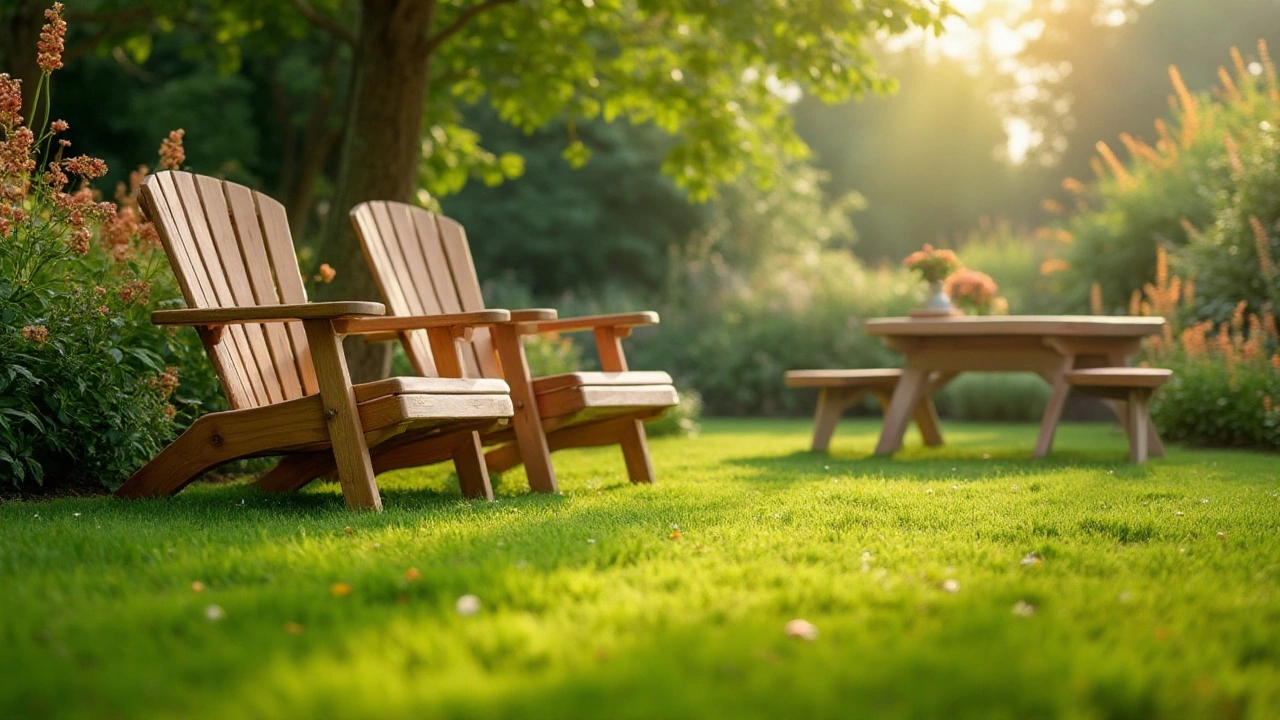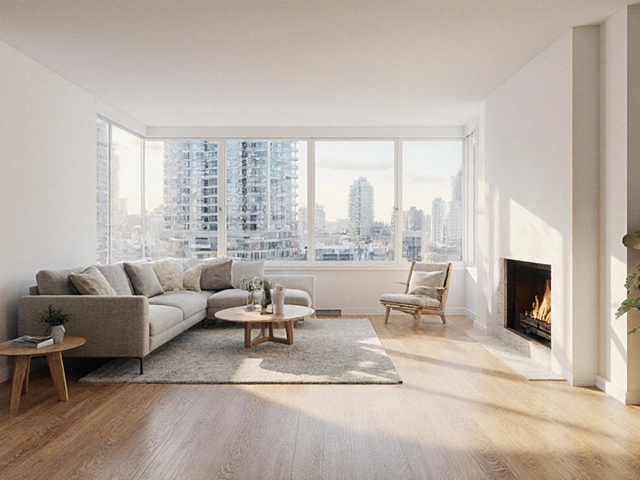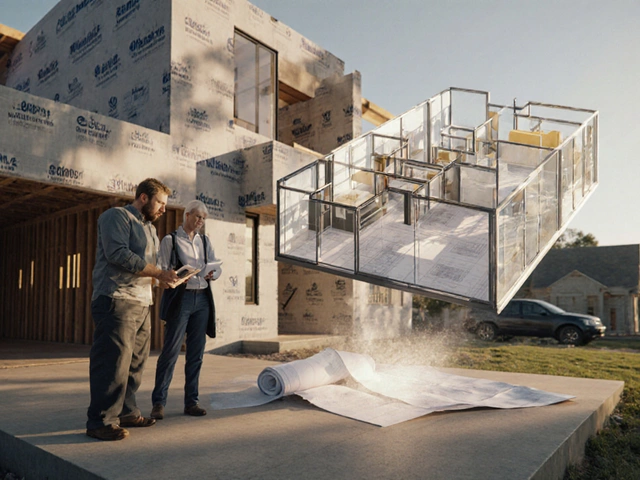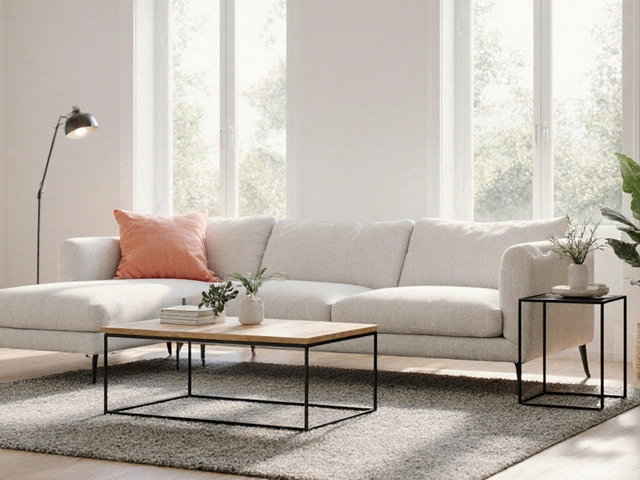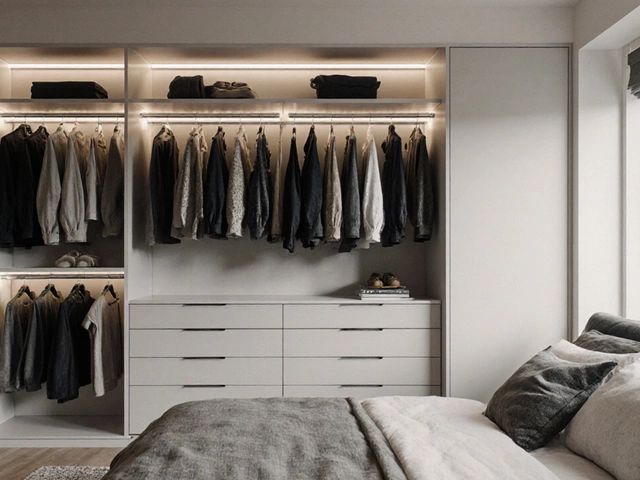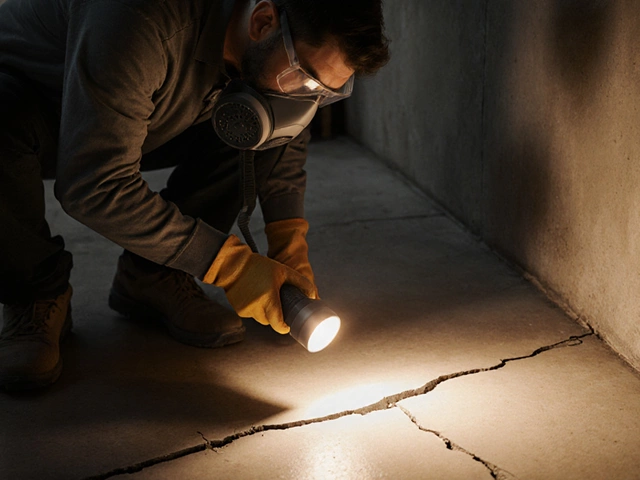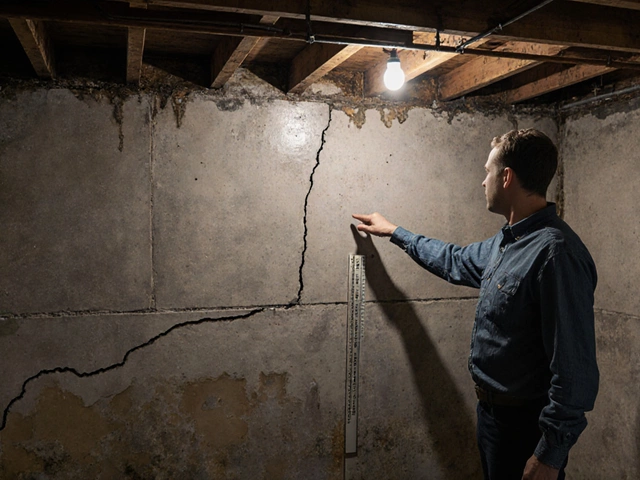When it comes to setting up a welcoming outdoor space, many homeowners ponder whether it's possible or practical to put furniture directly on grass. This setup offers a natural and relaxed vibe, blending seamlessly with the greenery. However, it's essential to weigh both the advantages and challenges this might bring.
The grass beneath furniture can suffer wear and tear, leading to bare patches or yellowing if not properly managed. It is important to consider the type of furniture, the frequency of use, and the prevailing weather conditions. With a little planning and care, you can maintain both a comfortable seating area and a healthy lawn.
- Understanding the Impact on Grass
- Choosing the Right Furniture Material
- Preventing Soil Compaction
- Moisture Considerations
- Maintenance Tips for a Healthy Lawn
- Creative Solutions and Alternatives
Understanding the Impact on Grass
Setting outdoor furniture directly on grass might feel like a step toward achieving the perfect garden oasis, but it’s a choice that carries both immediate and long-term effects on your lawn's health. The weight of furniture, especially heavy items like tables and seating sets, can compress the soil underneath, making it difficult for grass to achieve proper root growth. Compacted soil reduces the aeration that roots need to absorb nutrients effectively, which can lead to weakened grass blades and eventually to unsightly bald patches in your lawn.
Another consideration is how frequent furniture placement can disrupt the natural photosynthesis process. Grass needs sunlight to thrive, and when an object blocks it—even partially—there can be a significant impact on growth patterns. You might notice that areas under a piece of furniture remain damp for longer periods after rain or watering. This issue arises because natural evaporation processes are hampered, increasing the risk of disease and fungus growth. The moisture retention can, paradoxically, lead to dehydration when sunlight is insufficient for photosynthesis.
Seasonal changes play a significant role as well. During warmer months, the trapped heat beneath furniture can create stress for the grass, much like being under a magnifying glass. Winter, on the other hand, poses another set of challenges: the settled snow can shape around the furniture, leading to uneven melting patterns which might result in a patchier lawn come spring. “Grass is more resilient than we often give it credit for, but persistent pressure will alter both its appearance and health," says horticulturist Jane Mitchell.
Mitigating Soil Compaction
To counteract the compaction and moisture issues, one effective strategy is to rotate furniture placement regularly. This simple habit ensures that one particular area of your grass isn't bearing the brunt constantly. For heavier items, consider using broad bases or furniture feet designed to distribute weight more evenly. In cases where furniture must remain stationary, implementing a routine of aerating the soil can help. Aeration involves puncturing the soil at intervals to improve airflow, which is paramount for healthy grass.Lawn care requires a bit more diligence when you opt for this furniture arrangement. Incorporating organic fertilizers can replenish nutrients faster and easier than chemical options when applied routinely. If the aesthetics of a natural grass yard appeal to you, but the downsides worry you, consider hiring a professional landscaper for periodic check-ins to ensure your garden setup maintains its luster year-round without sacrificing the ease and comfort of having garden furniture available whenever you want it.
Choosing the Right Furniture Material
Selecting the appropriate garden setup is not just about aesthetics; it's also about ensuring durability and practicality, especially when placing furniture directly on the grass. The material of your outdoor furniture plays a crucial role in how well it withstands exposure to the elements and the natural wear that occurs over grassy surfaces. Let's explore some popular materials for outdoor furniture and how they fare when placed on grass.
Wooden Furniture
Wood is a classic choice for outdoor areas due to its timeless appeal and natural look, aligning perfectly with garden landscapes. However, wood can be a double-edged sword when positioned on grass. The moisture from the ground can accelerate rotting and weaken the structure over time unless the wood is treated properly. It's vital to opt for hardwoods like teak or eucalyptus, which are naturally resistant to water and insects. Always ensure proper sealing to enhance the wood's longevity. To avoid unnecessary wear, consider placing it on temporarily laid pavers or mats that can be easily removed.
Metal Furniture
Metal furniture, often made from materials like aluminum or wrought iron, offers high durability and is usually resistant to weather changes. Aluminum is lightweight and less likely to rust, making it an excellent choice for those who might frequently rearrange their garden setup layout. Wrought iron, while heavier and more prone to rust if not coated properly, provides a sturdy and elegant choice. Protect these materials from potential corrosion by using protective coatings or rust-resistant sprays.
According to the DIY Network's expert, “Aluminum is one of the best materials for outdoor furniture, as it doesn't rust and stays cool in the sun.”
Plastic and Resin Furniture
Plastic and resin offer some of the most versatile and low-maintenance options for outdoor furniture. These materials are generally light, easy to move, and resistant to moisture and fading from sunlight. They do not put much pressure on the grass, helping to prevent soil compaction. However, lighter items are more susceptible to being moved by the wind and might require securing to keep them in place during unpredictable weather.
Cushions and Fabrics
When your furniture comes with cushions or fabric components, it's crucial to ensure these are made from weather-resistant materials. Look for textiles labeled as outdoor or marine-grade to ensure longevity against UV rays and morning dew. Removable covers can be a great feature, allowing you to wash them periodically and store them during harsh weather conditions.
An Extra Tip for Longevity
Whether you choose wooden, metal, or plastic furniture, embracing practical accessories such as gliders or coasters under the furniture legs can significantly reduce direct pressure on the grass and help in maintaining a neat garden setup. Such additions act as a buffer, protecting both the lawn and the base of your outdoor furniture. Remember, making an informed choice about material not only elevates your garden's visual appeal but also ensures the sustainability of your investment.
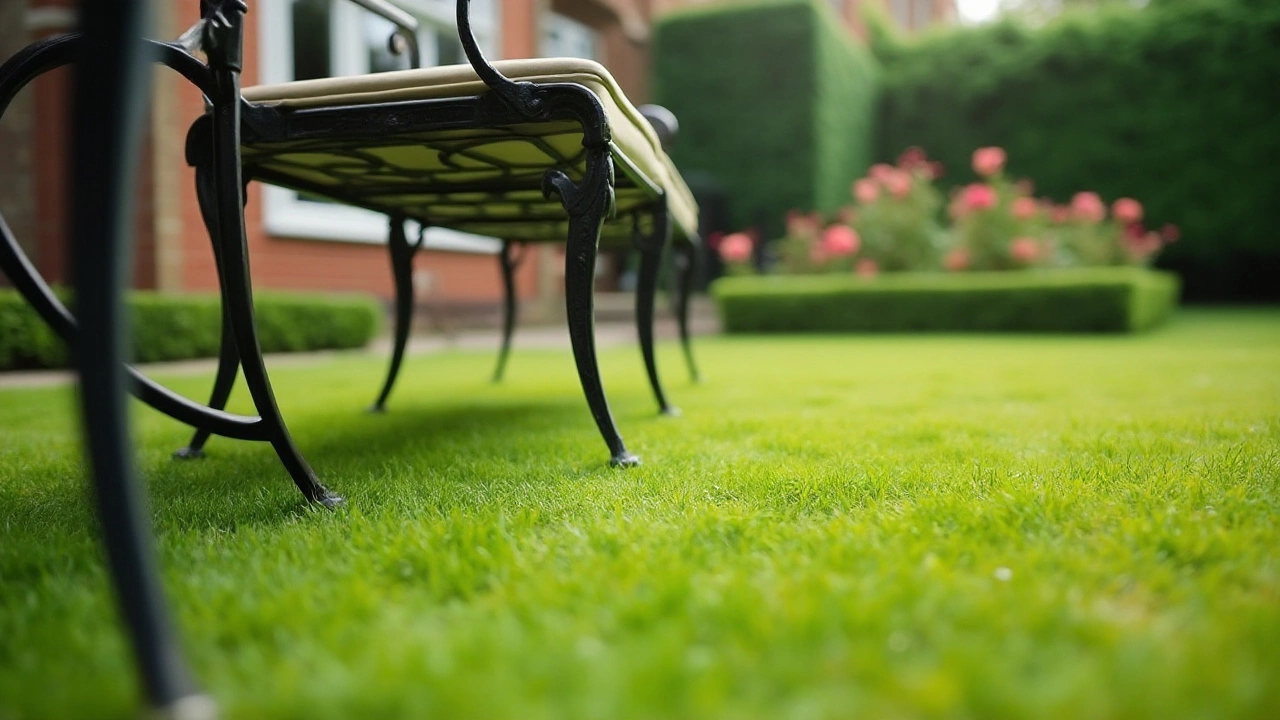
Preventing Soil Compaction
Placing outdoor furniture directly on grass involves specific challenges, and one of the most important ones is soil compaction. When soil becomes compacted under the weight of furniture, it loses the ability to properly absorb air, water, and nutrients. This compaction can lead to weakened grass roots and an unhealthy lawn. It's essential to understand how to prevent this process to maintain a vibrant and welcoming outdoor space. Soil compaction often happens when heavy furniture sits in one spot for extended periods. This pressure compresses the soil particles together, reducing pore space. To combat this, regularly reposition furniture to allow regrowth and avoid placing heavy furniture directly on the grass for long durations.
One effective method to reduce compaction is to use pavers or stepping stones beneath the legs of your furniture. These distribute weight more evenly, minimizing pressure on the grass itself. Similarly, materials like outdoor carpets or area rugs can provide a protective layer that spreads out the weight, giving your lawn a better chance to breathe and flourish. Ensuring that this covering is breathable is crucial, particularly since non-breathable covers can trap moisture, leading to additional issues like mold or mildew.
Rotating and Aerating
To further alleviate compacted soil's tight grip, rotating the placement of furniture every couple of weeks can make a significant difference. This not only helps maintain the garden setup but ensures that no single area becomes overly stressed. Also, consider implementing regular lawn aeration, which involves perforating the soil with small holes to allow air, nutrients, and water to reach down to the grassroots. Aerators can be manual tools, though mechanical plug aerators are remarkably effective for larger spaces. Including this practice in your routine maintenance can yield healthier, more resilient lawns.
"Proper lawn care, such as aeration and minimizing compaction, contributes significantly to the overall health of the grass," says landscape architect Julie Moir Messervy.
Consistent lawn care tailored to avoid compaction will promote lush, thriving grass year-round, an idea echoed by experts who emphasize its importance. Another consideration is to opt for lightweight furniture whenever possible, as it places less demand on the grass beneath. Investing in those made of aluminum, resin, or suitably treated wood could lead not only to a more flexible setup but also a healthier, more appealing lawn.
In addition, using a digital moisture sensor can guide your lawn care routine. These sensors help ensure the soil is neither too wet—leading to mud when furniture presses the lawn down—nor too dry, which could stunt grass recovery. When planning your outdoor furniture strategy, understanding these aspects and integrating them into your maintenance plan will go a long way in cultivating a lively, attractive garden that's both functional and easy to enjoy.
Moisture Considerations
When positioning outdoor furniture on grass, moisture dynamics play a critical role in the decision-making process. Grass, by its nature, thrives on water, but too much moisture trapped beneath furniture can spell trouble. Over time, the shaded areas under your chairs and tables can become damp, leading to unwelcome mold or mildew. This not only affects the health of the lawn but can also degrade furniture, especially if made of wood or fabric. Homeowners should consider both short-term weather forecasts and seasonal changes to anticipate moisture levels.
Materials like metal or plastic may resist moisture differently, standing up better to damp conditions than wooden furniture. These materials can still leave the grass beneath feeling humid and squashed. Regularly moving your outdoor furniture is a good practice to prevent any permanent damage to your lawn. An occasional lift and shift is far more effective in maintaining a healthy, even spread of moisture across your garden. Letting the sun reach those shaded spots periodically aids drying and reduces any damp build-up.
Moisture impact can also extend to soil compaction, which affects lawn care in surprising ways. Constant pressure from furniture can lead to hard, compacted soil that doesn't absorb water efficiently. To counter this, consider using ground protectors or patio slabs under chair legs. These can help distribute weight more evenly, lessening direct load on the grass and allowing moisture to circulate properly.
"It's important to understand that the effects of moisture aren't just about the immediate visual impact on your lawn," says Dr. Lisa Gresham, a prominent landscape ecologist. "In the long run, poor moisture management can alter the soil's properties, affecting everything from water drainage to the natural growth of grassroots."
During wetter months, or in regions prone to rainfall, positioning outdoor furniture may need more consideration. You might employ strategies like elevating furniture slightly off the grass during a heavy rain downfall. Lifting furniture using small bricks or custom stands underneath each piece keeps air flowing and reduces moisture retention under the legs.
The nuanced approach to garden setup and moisture demonstrates the importance of understanding environmental factors at play. By observing and adapting to the level of water your lawn experiences, you can balance both usage and preservation. The key is not to view moisture merely as a challenge but as a factor in landscape design. Creative, mindful arrangements can add to the longevity of both your outdoor setup and the vibrant life of your lawn.
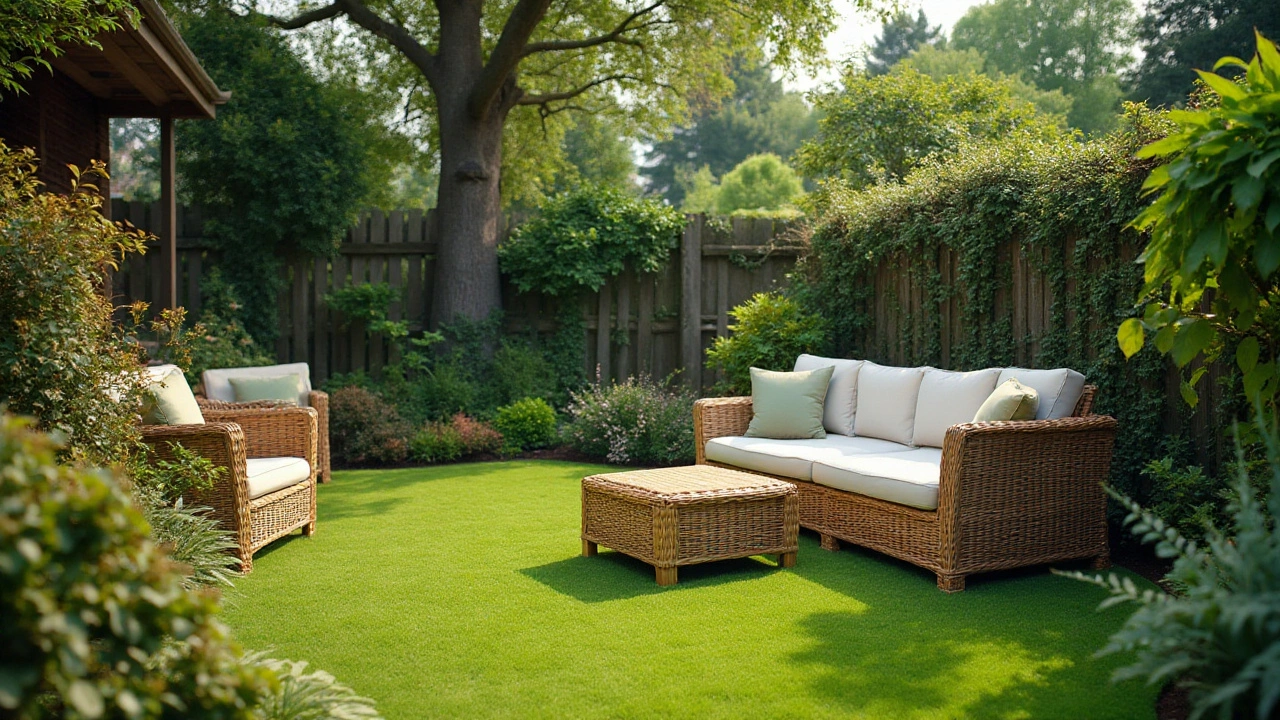
Maintenance Tips for a Healthy Lawn
Preserving the lushness of your lawn while enjoying it with outdoor furniture requires a bit of diligence and good practices. Grass is a resilient plant but repetitive pressure from furniture can lead to compaction, which deprives roots of necessary oxygen. Start with periodic repositioning of your garden setup to prevent prolonged stress on the same patch. Move your outdoor furniture slightly every few days if possible. This simple act allows the compressed grass to recover, promotes even wear, and maintains uniform growth.
Watering also plays a pivotal role in lawn health. A well-watered lawn resists discoloration and thinning even under pressure. It's imperative to water the grass deeply, where moisture reaches the root level, rather than frequent shallow watering. This approach nurtures stronger roots— robust enough to withstand weight. As a rule of thumb, aim for about an inch of water weekly, adjusting based on seasonal variations and your specific climate.
Incorporating aeration into your lawn care routine can significantly affect how grass responds to garden setup. Aeration is the process of perforating the soil with small holes to improve air exchange and water absorption. This is crucial if you frequently place heavy outdoor furniture on the grass, as it alleviates compaction and promotes grass health. Experts from Better Homes & Gardens suggest aerating your lawn once or twice a year, depending on its condition.
"Healthy grass is half the battle to a thriving outdoor space," says Michael Gaffney, author of practical gardening guides. "Consider your lawn as an investment that enhances the quality of your time outdoors."
Another important aspect is fertilizing. A nutrient-rich soil ensures that grass has the resources to repair and grow stronger. Use a balanced fertilizer designed for lawns to apply once in early spring and once in late fall. Be sure to follow the instructions carefully to avoid burning the grass with too much nitrogen. Combining this with timely overseeding, especially on thinning areas, helps maintain dense grass coverage, consequently beautifying any garden setup.
Lastly, consider creating a designated furniture area using temporary outdoor mats or moveable tiles. These can redistribute weight and act as a barrier protecting your grass from too much direct pressure. They offer flexibility, allowing you to enjoy a refreshed look each season. A creative application of these solutions can keep your lawn vibrant while making the most of your outdoor furniture.
Creative Solutions and Alternatives
Creating that perfect outdoor oasis doesn't always have to mean placing your outdoor furniture directly on grass, especially if maintaining a pristine lawn is a top priority. Several creative solutions and alternatives can help preserve your garden's visual appeal and health. One option is to consider using temporary hardscaping features like patio tiles, which can be placed on top of grass without permanently altering the structure of your lawn.
These modular tiles are designed to interlock securely, creating a stable surface for your furniture while allowing you to relocate or remove them when necessary. Such a setup keeps the grass beneath safe from heavy pressure and sunlight blockage. Adding to their appeal is the wide range of designs and colors available, enabling you to match your aesthetic preferences without commitment. A practical alternative could include wooden pallets, which provide a rustic look and can be painted or stained to withstand the elements.
Another imaginative approach involves using ground covers such as clover or creeping thyme as an alternative to traditional grass. These robust plants can handle foot traffic and grow back quickly if damaged, providing vibrant, lush greenery that complements your garden setup. They also add aromatic qualities, enhancing the sensory experience of your outdoor space. Additionally, incorporating decorative gravel or mulch around furniture legs can mitigate soil compaction by redistributing weight and allowing moisture to escape.
A particularly ingenious idea for avoiding placing furniture directly on the lawn is to construct a temporary decking area or a floating patio. This can be as simple as using a well-laid platform of pavers or brick that provides a neat and stylish finish without the need for permanent construction. This not only protects your grass but also gives you the flexibility to adapt your space in future seasons. However, it’s worth noting that this strategy requires some initial investment, both in materials and possibly labor if you're not a DIY enthusiast.
Vancouver's climate, for instance, can be quite damp, and moisture-loving plants or materials might be apt choices here. Selecting outdoor rugs designed for weather resistance can add a touch of class while guarding grass from the scratchy surfaces of furniture. These rugs often feature vibrant patterns, enhancing the visual appeal of your outdoor area while being easy to clean and replace when needed.
From economic to elegant solutions, each possibility has its charm and practicality. It's just about finding what fits your vision of a perfect garden setup. "An outdoor space should be a reflection of your personality and needs," says landscape designer Jane Somerville in Garden & Home magazine.
It doesn't have to conform to preconceived notions of what a garden should look like. You can create unique structures that preserve your lawn and cater to your lifestyle.With these creative strategies, your green space can thrive alongside a comfortable and stylish outdoor living area.
